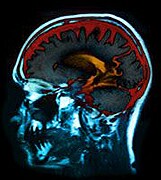Two cases demonstrate possibility of Susac syndrome for young patients presenting with confusion
TUESDAY, March 10, 2015 (HealthDay News) — For young patients presenting with acute confusion, Susac syndrome should be considered, according to a case report published online Feb. 10 in the Journal of Stroke & Cerebrovascular Diseases.
Michael Star, M.D., from the Loyola University Chicago Stritch School of Medicine, and colleagues described the clinical course, investigations, management, and follow-up of two patients presenting with acute confusion and abnormal neuroimaging and cerebrospinal fluid (CSF) findings, who were initially misdiagnosed.
The researchers describe a 57-year-old woman with acute onset of confusion, who was initially thought to have multiple strokes. Restricted diffusion involving the splenium of the corpus callosum was demonstrated on magnetic resonance imaging (MRI) and elevated protein levels were seen in CSF. Asymmetric bilateral sensorineural hearing loss (SNHL) was seen on audiometry. Multiple bilateral branch retinal artery occlusions (BRAOs) were seen on fluorescein angiography. The patient was treated with corticosteroids and intravenous immunoglobulin (IVIG); her confusion had resolved at one-month follow-up. The second case involved a 32-year-old man with acute onset confusion. Pleocytosis and elevated protein were seen in CSF. Restricted diffusion involving the corpus callosum was seen on MRI. After presentation for a third time, the patient was found to have bilateral BRAOs and bilateral SNHL. He received IVIG and demonstrated resolution of confusion at one-month follow-up.
“Susac syndrome should be considered in young patients with otherwise unexplained acute onset of confusion with MRI and CSF changes as described previously,” the authors write.
Copyright © 2015 HealthDay. All rights reserved.








